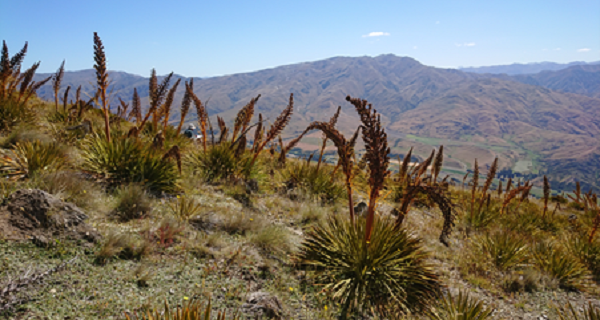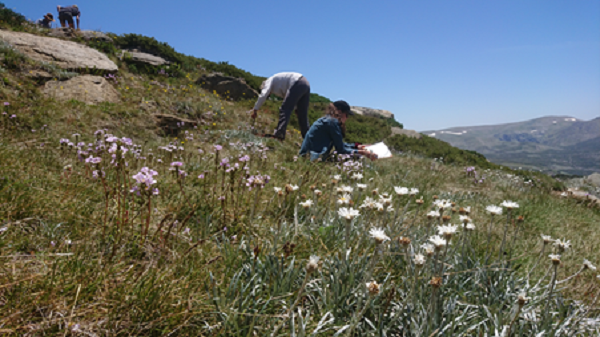Climate change: Are mountain plants too inflexible?
Alpine plants display little variation within their species. Authors of a new study published in Journal of Ecology explain how this could put them at a disadvantage when it comes to climate change.

Climate change also affects plants: warmer or wetter summers, for example, could enable them to grow faster and reproduce more successfully. While this may seem like a good thing, the reality is more complex and the implications are far from clear. That’s because not all plant species are equally adept at exploiting such changes to their growing conditions.
Experts fear that generalists and common species will benefit most and so displace rare species and specialists adapted to inhospitable habitats (see also Plants are conquering Europe’s summits at an ever faster rate).
Plant ecologist Christian Rixen from the WSL Institute for Snow and Avalanche Research SLF in Davos, Switzerland, has conducted a study on this subject, together with colleagues from China, Australia and New Zealand. The study has now been published in the Journal of Ecology. The researchers examined ‘traits’ in 66 plant species. These are characteristics that can vary among individuals of the same species, such as the plant’s height. Such traits also perform important functions in the natural world. For example, taller specimens benefit from more sunlight and produce more biomass.
The researchers suspect that plant species with a high level of trait variation are generally better able to respond to changes in their environment since whatever form the change takes, some specimens will already be adapted to cope with it.

Rixen and his colleagues examined seven selected traits for each plant species (including height, leaf area and whether the plant produces flowers) as well as the distribution of the species along elevational gradients on mountains in China, Australia, New Zealand and Switzerland. The analyses paint a consistent picture in all the regions investigated:
- Plant species that prefer to grow at lower elevations display great trait variation.
- Plant species found at all elevations also exhibit great trait variation.
- Species that favour very high elevations show little trait variation.
So, if variation is indeed a key factor for rapid and successful adaptation to climate change, then alpine specialists run the risk of falling behind and being squeezed out by more ubiquitous species and generalists.
Christian Rixen and his colleagues are continuing their research with long-term observations of alpine flora in Switzerland and worldwide. However, as well as observational studies, complex experiments are needed to find out whether their basic hypothesis is really correct. In a few years’ time, the results will show whether high trait variation is indeed a success factor for adapting to climate change.
You can read the full article here:
https://besjournals.onlinelibrary.wiley.com/doi/10.1111/1365-2745.13848
Like what we stand for?
Support our mission and help develop the next generation of ecologists by donating to the British Ecological Society.